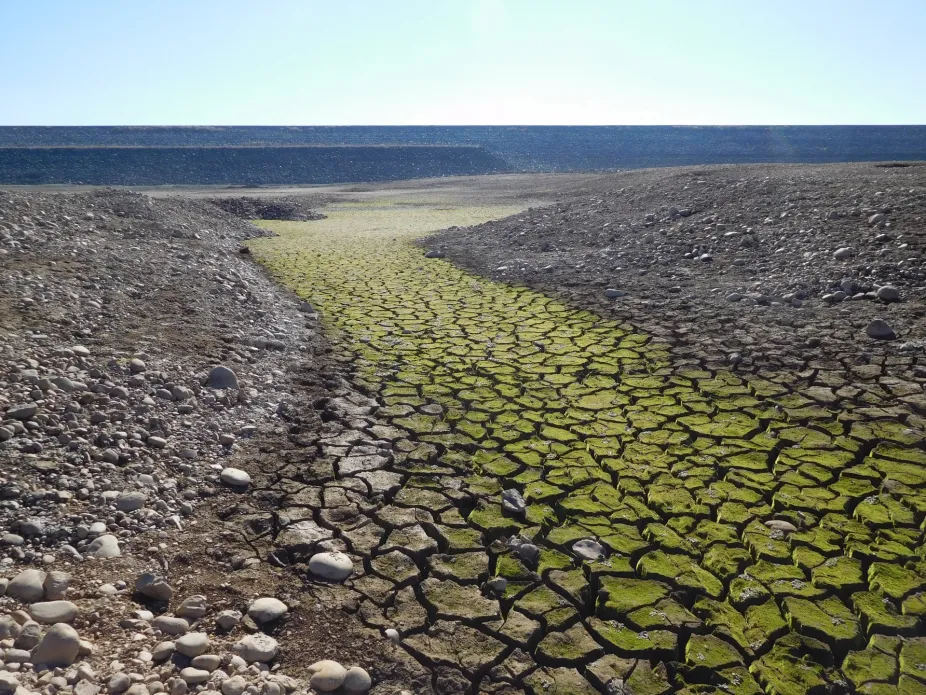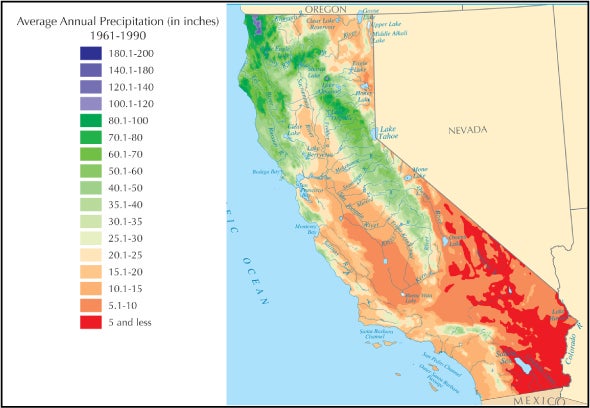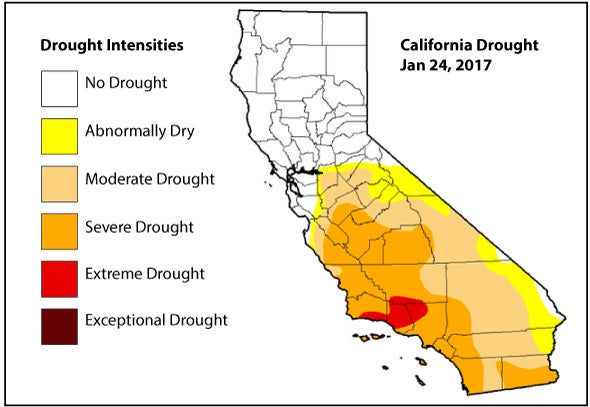The Same Rainfall Ends Drought in Some Places but Not Others
California is prone to drought, but it's also prone to heavy rainfall events. After five years of parched conditions, California got lots of rain and snow in January 2017. There was so much precipitation that, by the end of January, about half the state was free from drought. How much precipitation was needed to stop the drought? The amount was different from place to place.
A drought is a long period of unusually dry weather. But there is not an exact amount of dry weather that constitutes a drought because it is relative to the typical amount of rain and snow (precipitation) in an area. This typical amount of precipitation is defined as a part of a region’s climate and is calculated as a 30-year average.

Creative Commons
The interesting thing about California is that the state is so large that it has several different regional climates. In general, Northern California is more moist with a Mediterranean climate according to the Koppen Climate Classification system. Southern California is drier with areas of semi-arid or desert climate. There’s also a small area of subarctic conditions in the Sierra Nevada mountain range.
Because climate varies through the state, so does the average precipitation. Some areas in Southern California receive five inches of precipitation or less per year on average. Other areas, like coastal Northern California, receive one hundred inches of precipitation in an average year. What’s normal in these two areas is different. The amount of moisture during drought conditions in Northern California would look like extremely wet conditions in Southern California.

Average annual precipitation (inches) in different parts of California
Adapted from the U.S. Geological Survey
In 2017 there were different amounts of drought in California. Some areas had mild drought conditions, somewhat drier than normal. Other areas were experiencing moderate, severe, or extreme drought. Below, the map of January 2017 drought conditions from the Drought.gov website indicates the areas of California and Nevada that are in a drought. Notice that areas that are usually dry in Southern California were even drier.

Map of drought in California, January 24, 2017.
Adapted from Richard Tinker, CPC/NOAA/NWS/NCEP
Drought can be natural, but climate change is changing precipitation, increasing the chance of drought in many areas. You can keep track of drought at the Drought.gov website provided by the National Oceanic and Atmospheric Administration (NOAA) and find out if there’s a drought where you live.
Explore More about Water:
- Measuring Rainfall: It's Easy and Difficult at the Same Time
- The Water Cycle
- Will it Rain, Sleet, or Snow?
Classroom Activities from the UCAR Center for Science Education:
- Middle and High School
- Elementary School